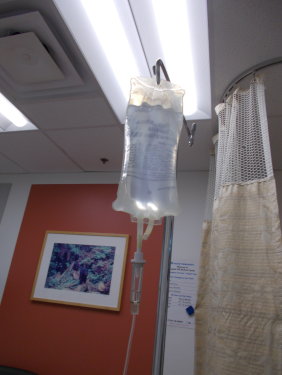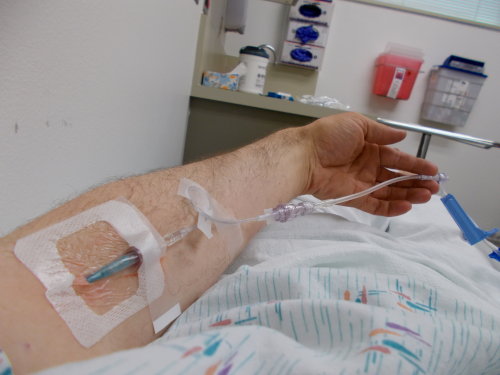Campylobacter (Campylobacteriosis)
After about 15,000 miles (24,000 km) of backpacking, I finally succumbed to my first water-borne illness. And for all the press that Giardia gets for being the backcountry boogyman, that wasn’t even my downfall!
No, I was struck down by Campylobacter jejuni, a disease I had never even heard of until I came back positive for it.
The Symptoms
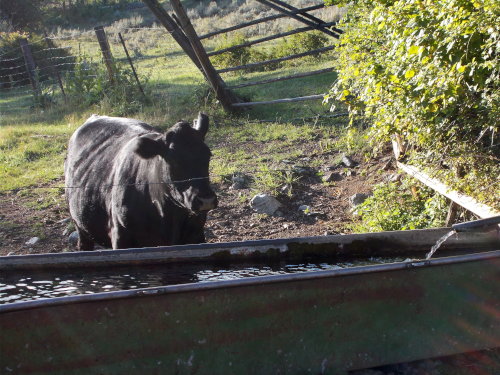
I was over 600 miles into a thru-hike of the Pacific Northwest Trail (PNT), deep in the Pasayten Wilderness.
The first symptom I noticed was a poop that came out surprisingly soft. It wasn’t diarrhea, but I had been doing good, solid poops for quite some time and had no reason to expect the consistency to change. Not like I suddenly started eating prunes on the trail! But I didn’t think too much of it—just noticed that it was a little softer than normal but nothing that I considered abnormal.
During the day, I didn’t seem as hungry as often as I usually did on a long-distance trek. I still did get hungry and continued to eat, but not as much as normal. So again, the symptom was mild, and I didn’t recognize it as being noteworthy.
It wasn’t until about 12 hours after that first soft poop that my intestines started making a lot of noise and I got the first uh-oh feeling. Something bad was happening in my body, and although I typically only poop once a day—which I did earlier that morning—I had a sudden and strong urge to do another one.
And whoa! It was nasty! Full-blown diarrhea as loose and liquid as water with a few small chunks in it.
At this point, I knew there was something definitely wrong with my body, and I finally recognized that the soft poop and reduced appetite were symptoms of a bigger problem.
But there was nothing I could do about it, and I hoped the malady would pass quickly. Most of the time when I become ill, I typically bounce back within 24 hours. Hopefully, whatever I had, would pass quickly. Maybe get a good night’s sleep and perhaps—I hoped—I’d be better in the morning.
I wasn’t better in the morning, however. Nor the morning after that. Nor the morning after that. For five days, I suffered from terrible diarrhea and a complete loss of appetite. Over the course of five days, I could have fit all of the food I ate into a single hand. I was deep in the Pasayten Wilderness, a vast area in the middle of nowhere, and it took me five days to hike about 70 miles to a trailhead where I knew I could find help. Since I was eating almost nothing, I grew weaker and weaker with each passing day and the miles I covered each day dropped dramatically.
I emptied my bowels a few times each day—although after a couple of days there wasn’t much to empty. I suffered from nausea regularly, but only vomited once and my stomach was so empty, only water came up. Although I couldn’t eat anything, I had no trouble drinking water or keeping it down. The nausea was considerably worse when I tried to eat. An entire meal might consist of five Jelly Bellies before I called it quits. I stopped eating not so much because of the nausea, however, but rather just because I didn’t feel hungry—at all.
Later, I would learn that other symptoms can include fever and abdominal cramps—symptoms I did not notice in my own case.
Diagnosis and Treatment
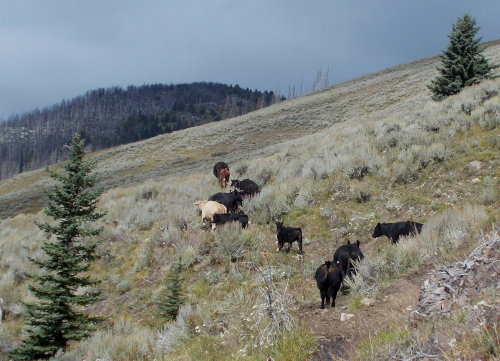
By the time I got off the trail, I was absolutely convinced I had Giardia. I had been drinking untreated surface water for hundreds of miles and, even worse, parts of the trail led through cattle country. I avoided some of the worst-looking water sources that the cattle had contaminated, but—obviously—it had not been enough.
In the backcountry, you always hear about Giardia. Giardia this! Giardia that! It often sounds like if Giardia didn’t exist, you wouldn’t need to treat water sources at all—and I knew explosive diarrhea was a symptom. It must be Giardia, I thought. After 15,000 miles, my lack of water treatment has finally caught up with me.
After getting off the trail, my first stop was to a walk-in clinic. I told the doctor I suspected Giardia and the symptoms I had. She agreed that Giardia was likely but explained that she didn’t have the equipment to test for it and did not feel comfortable prescribing the medications for it without first confirming my diagnosis because of the potential side effects of the medication. She directed me to an urgent care center halfway across town where they could test for Giardia.
Disappointed, I trekked over to the urgent care center, mildly concerned about how much that was going to cost me. I’d never been to an urgent care center before!
I explained my symptoms and they took my vitals. They took blood to test right away—but to confirm if I had Giardia, they’d need a stool sample later. While the blood tests were going, they felt it best to hook me up to an IV in case I was dehydrated. I was probably a little dehydrated—I limited my drinking once I got off the trail so I wouldn’t have to pee during the 4-hour ride back home. (Sometimes, when I peed, a little diarrhea slipped out—which made peeing very inconvenient!) But I doubted the dehydration was severe, and the blood tests later showed as much.
The doctor here also did not want to prescribe medication for Giardia without first confirming the Giardia diagnosis, but she gave me a prescription for metronidazole (a.k.a. Flagyl). It should help, she insisted, and had fewer (or at least less severe) side effects than the stuff specifically for Giardia.
As long as it helped, I didn’t care!
They gave me a kit to take a stool sample, and I headed to the bathroom where I did that. Then I picked up my prescription—10 pills for $6.33—and took the first pill immediately. I’d take one every 12 hours for five days.
Afterwards, I headed to the supermarket to pick up a supply of Gatorade. I had no trouble drinking liquids and Gatorade had calories that I desperately wanted after not eating for five days. I was actually planning to do this anyhow, but my doctor also suggested it to help stay hydrated. I wanted it more for the calories than its hydration properties, though.
I soon felt considerably better. My appetite started coming back and 24 hours later, I ate a full-sized meal for dinner. The watery diarrhea started firming up again—but it took the better part of a week before it was back to normal.
Three days after my doctor visit, I got one of the stool test results back: negative for Giardia. What?! I didn’t have Giardia? What the hell was it?! Would I ever know?
The day after that, I got another test back which came back positive for Campylobacter jejuni—a disease I had never even heard of before.
I quickly learned all there is to know about it—including the fact that you can get it by drinking untreated surface water. Also, most people get better without treatment after about a week. I started getting better six days after I first noticed symptoms and wondered if I got better on my own or if the drug I was taking helped. If I waited it out for another day or two, I might have saved myself the effort and cost of a doctor’s visit.
What is Campylobacter?
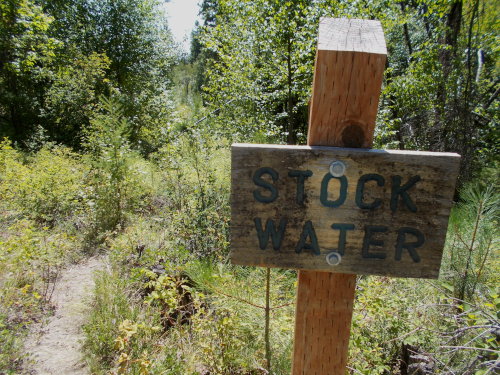
According to the CDC, Campylobacter is one of the most common causes of food poisoning in the United States with an estimated 1.3 million cases each year. Most human illness is caused by one species, Campylobacter jejuni, but other species also can cause human illness.
The disease is a bacterial infection, and—this is according to Wikipedia—up to 100% of poultry have asymptomatic intestinal infections. Chickens, cattle, sheep, birds and other animals can carry the disease while showing no symptoms. In 2014, the National Antimicrobial Resistance Monitoring System testing found Campylobacter on 33% of raw chicken bought from retailers.
The bacteria is found in the feces of infected people and animals. Milk can become contaminated if a cow has a Campylobacter infection in her udder. Fruits and vegetables are contaminated through contact with soil containing feces from infected animals. And people can acquire it—the most likely way I acquired it—by drinking water from contaminated lakes and streams.
The disease is usually not transmitted from one person to another and large outbreaks are rare.
The Take-Away
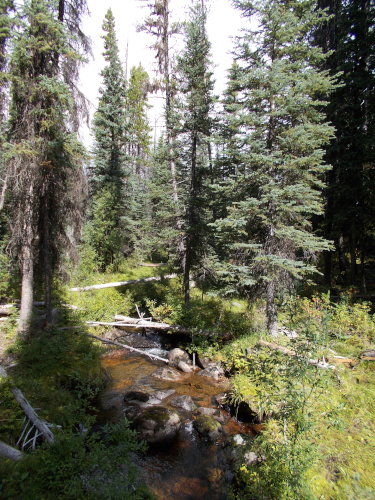
Although I’ve continued to dodge the Giardia bullet, you might think this episode will finally put a stop to my drinking untreated surface water. It was a truly horrific experience, and my symptoms appeared at one of the most remote locations where I’ve ever hiked. It seemed like everything that could go wrong did.
But... it all turned out okay in the end. I made it out okay, and on my own. Treatment was effective and successful, and I’m none the worse for wear because it.
Will I continue drinking untreated surface water? Absolutely! I’ve had a good track record with it overall, but I might be a bit more careful about which water sources I’ll be willing to drink from. My downfall, I suspect, might have been because I was drinking two-star water. I knew I shouldn’t have been drinking it untreated. I knew there were cattle roaming the hills and drinking from the same creeks I used, but it didn’t seem like there were large numbers of them, and I was lazy and took my chances. Shame on me. It wasn’t good water, and I knew it wasn’t good water, but I had hoped it was good enough... but it wasn’t.
So I’ll definitely treat all two-star water now. Maybe even some three-star water. But 4 and 5-star water? Naww.... I’ll keep drinking those without any treatment. There’s nothing that tastes better than cold spring water on a hot day!

